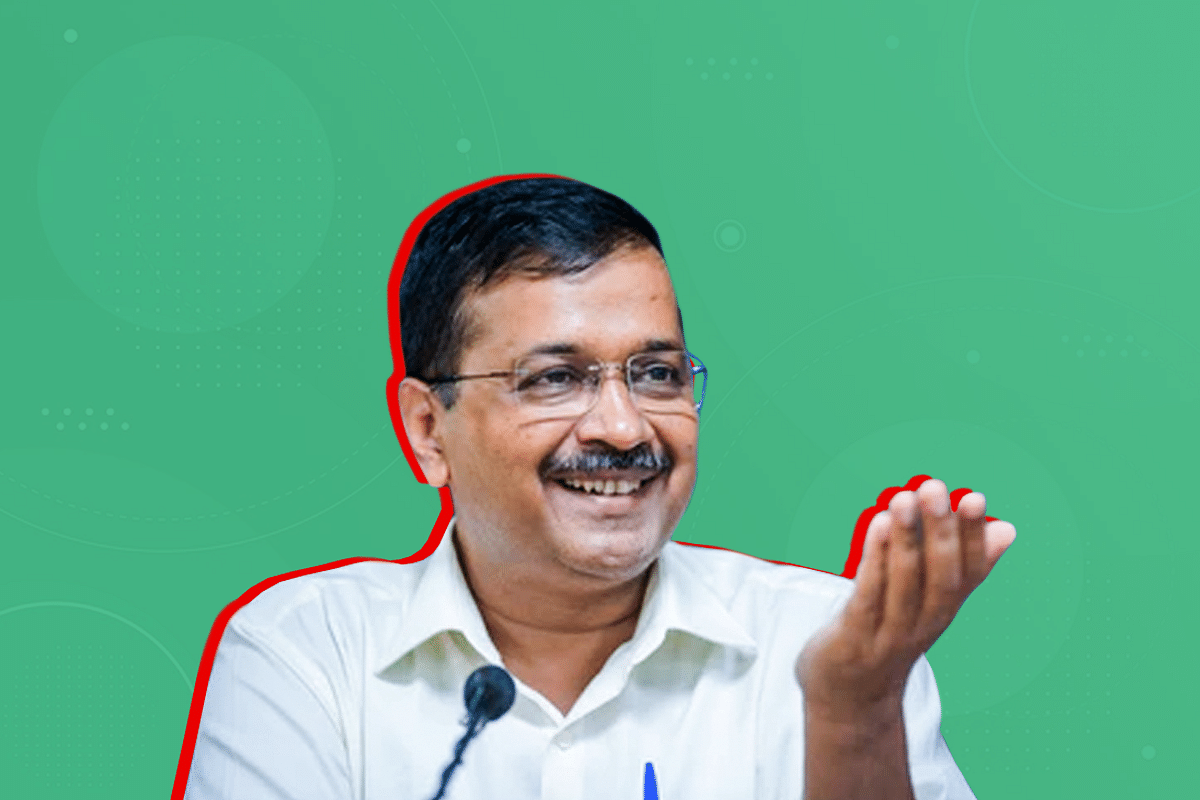Politics
OBCs, Tribals, And Patidars—Kejriwal Plays The Caste Card In Gujarat
- After Congress' KHAM, KOKAM, and ‘hokum’, we now have AAP's OTP (OBCs, Tribals, and Patidars-the Patel community) in 2022.
- Will it work?

Aam Aadmi Party chief and Delhi CM Arvind Kejriwal
Delhi Chief Minister Arvind Kejriwal, of the Aam Aadmi Party (AAP), has now formally played the caste card in Gujarat. On 4 November, Isudan Gadhvi was chosen as the party’s chief ministerial face for assembly elections due early next month.
As if on cue, mainstream media fell over itself to highlight the point that Gadhvi, a former television anchor, was an inspired choice because he was from the OBC (Other Backward Caste) community.
Much was made of the subliminal, symbolic importance behind the lovely saree Gadhvi’s mother wore at the nomination event – in black and red, which are apparently the traditional colours of her community.
Adding parochialism to casteism, they also pointed out that Gadhvi was from Saurashtra – a region where the Bharatiya Janata Party (BJP) didn’t do so well in the last assembly elections of 2017.
The not-so-subtle messaging was that the BJP would face stiff competition from the AAP, led by an OBC from Saurashtra.
It was jarring to witness this throwback to Mulayam-Lalu days, when identity trumped merit; and more so, to see this happening in a state which was once rent asunder by caste politics.
But all that paled the next day, 5 November, when Kejriwal referred to a caste formula for the upcoming Gujarat elections, at an interview organised by a leading media house. He said, with his trademark smirk, that some had baptised the AAP’s strategy with an acronym – OTP, meaning OBCs, Tribals, and Patidars (the Patel community).
Kejriwal qualified, smirk still firmly in place, that while their chief ministerial face was an OBC, according to him, the AAP was making waves in the tribal belt and their state party chief, Gopal Italia (who was widely chastised by all but his party for making truly objectionable comments about Prime Minister Narendra Modi’s mother), was indeed from the Patidar community, and that the AAP would provide free electricity to all, irrespective of community.
So now we have casteism, parochialism and welfarism at play in the Gujarat elections. This is a dangerous game which Kejriwal and the AAP have chosen to play, at certainly the wrong juncture, and in absolutely the wrong state.
His successor, Chimanbhai Patel, successfully applied his own caste formula in 1990, called ‘KOKAM’ – Koli (a large OBC community), Kanbi (agrarian communities), and Muslims.
Then, after a long, merciful gap of sanity, came Rahul Gandhi’s ‘hokum’ in 2017, when he tried to institute a three-pronged caste onslaught to garner the Dalit, OBC and Patel vote (see here for a detailed exposition of the Congress’ caste politics in Gujarat, and the BJP’s response). It didn’t work.
Now, setting morality aside for the moment, exactly as politicians who attempt social engineering of this sordid sort do, it is the right of a political party to employ identity politics as an electoral tool, not least, because there is hardly anything in the law which actually prevents them from doing so.
This approach works for some parties, for a few election cycles, because the BJP, right from its Jana Sangh days, is structurally incapable of playing such caste games.
This is since the foundational (and electoral) basis of the BJP is resolutely predicated upon a slow, methodical, generational, systematic agglomeration of the entire voting spectrum into one, large, monolithic, supra-caste ‘coalition’.
However, the situation has changed since the BJP achieved critical mass in 2014. Today, they are consistently expanding their voter base across the country, at a much faster pace, by successfully attracting those very social groups which had been fiercely loyal to caste-based parties at loggerheads with the BJP. The BJP has learnt to cut the strength of their opponents from under them.
So, after KHAM, KOKAM, and ‘hokum’, we now have OTP in 2022. Will it work? No, it won’t, because the BJP has neutralised those factors which hurt it in some pockets of the state in 2017. It is battle-ready again.
Thus, Kejriwal would do well to read the history of modern Gujarat before he unleashes yet another round of ugly casteism upon Gujarat. If not, he and his party would only succeed in temporarily ripping the social fabric of Gujarat, before they too go the way of the Congress.
Introducing ElectionsHQ + 50 Ground Reports Project
The 2024 elections might seem easy to guess, but there are some important questions that shouldn't be missed.
Do freebies still sway voters? Do people prioritise infrastructure when voting? How will Punjab vote?
The answers to these questions provide great insights into where we, as a country, are headed in the years to come.
Swarajya is starting a project with an aim to do 50 solid ground stories and a smart commentary service on WhatsApp, a one-of-a-kind. We'd love your support during this election season.
Click below to contribute.
Latest